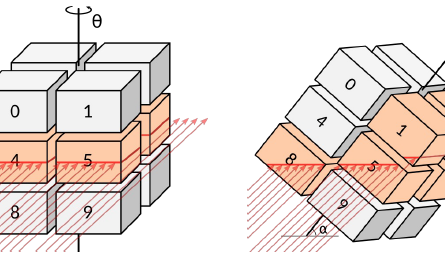
Laminography is a specialized 3D imaging technique optimized for examining flat, elongated structures. Laminographic reconstruction is the process of generating 3D volume from a set of 2D projections that are collected during the laminography experiment. Iterative reconstruction techniques are typically the preferred computational method for generating high-quality 3D volumes, however, these methods are computationally demanding and therefore can be infeasible to apply to large datasets. To counteract these challenges, we require state-of-the-art computational methods that can efficiently utilize high-performance computing resources such as GPUs. In this work, we investigate the integration of the Unequally Spaced Fast Fourier Transform (USFFT) with two optimization methods: the Alternating Direction Method of Multipliers (ADMM) and the Conjugate Gradient (CG). The usage of USFFT addresses non-uniform sampling issues typical in laminography, while the combination of ADMM and CG introduces robust regularization techniques that enhance image quality by preserving edges and reducing noise. We further accelerated the iterative algorithm of USFFT by preprocessing the image into the frequency domain. Compared to the original algorithm, the optimized USFFT method achieved a 1.82x speedup. By harnessing heterogeneous computing and parallel computing with both CPU and GPU, our approach significantly accelerates the reconstruction process while keeping the quality of the generated images. We evaluate the performance of our methods using real-world datasets collected at 32-ID beamline at Advanced Photon Source using Argonne Leadership Computing Resources.